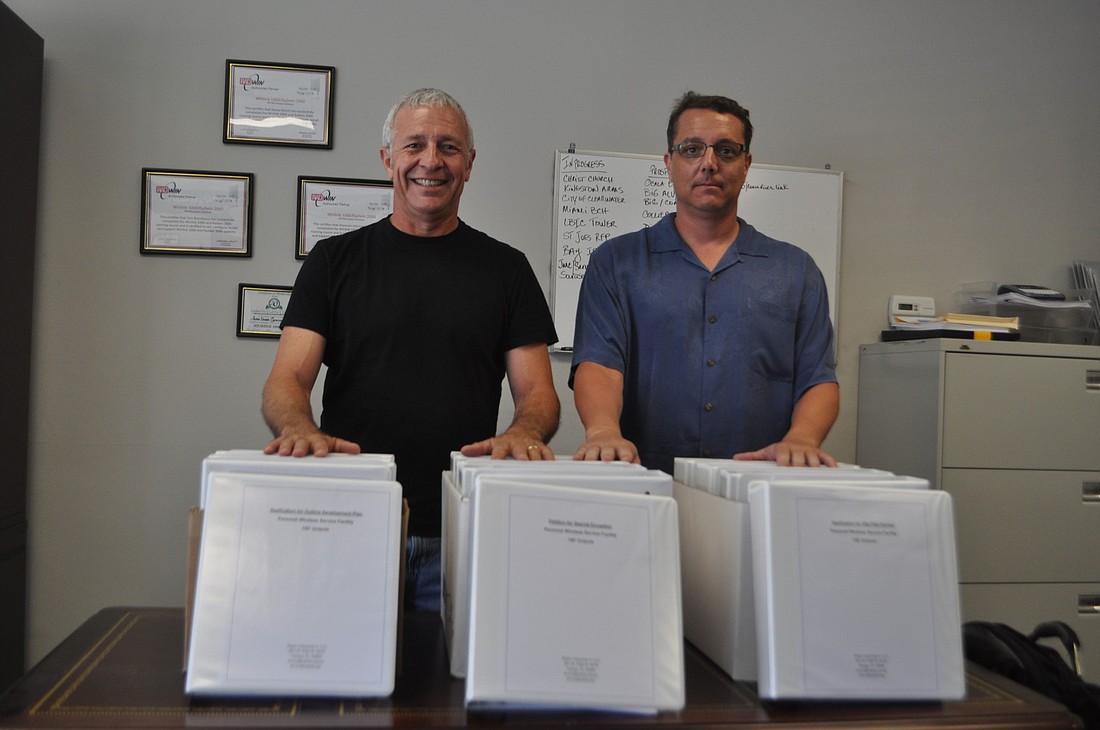- April 25, 2024
-
-
Loading

Loading

“I never have service in my name, which could potentially be dangerous in a life-threatening situation.”
“I must go out to my street until I find a signal and then not move during the conversation.”
“Cell-phone service is a must for business and personal use in this day and age.”
Those are just three of the comments included among the 639 applications signed in favor of a cell-phone tower on Longboat Key.
Longboat Key resident and Alpha-Omega Communications Inc. owner Jim Eatrides, who distributed the survey and who has worked for more than a decade to bring a cellular tower to the north end of Longboat Key, said he understands their pain: He gets a cell-phone signal of -114 dBm on a typical day at his Whitney Beach office. A call needs a signal of -100dBm or more to have a clear signal, Eatrides said, so the result is frequently missed or dropped calls. But Eatrides hopes that lines of communications on the north end of the island will open soon. He and his business partner, Kevin Barile, president of the Tampa-based Ridan Industries II, submitted three separate applications to bring a cellular tower to the north end of Longboat Key for formal review Monday, Aug. 1 to the Planning, Zoning and Building Department.
The plan calls for building a 150-foot, stealth cellular tower on a 4.5-acre portion of Longboat Island Chapel property.
“One of the things we need is reliable phone and mobile service in order to have a good quality of life on the island,” said Eatrides, who noted that in 2009, 66% of all Manatee County 911 calls, along with 62% of those in Sarasota County, were made via wireless phone. “What we have on the north end of the island is substandard, frustrating and potentially hazardous in emergency situations.”
The south end of the island is home to antennae — located at the Privateer and Islands West — that can boost reception. But, unlike the south end, the north end isn’t home to multi-story buildings that could hold an antenna high enough to get a signal.
According to Eatrides, the 150-foot height is necessary to support six cellular towers. The tower needs at least 90 feet to transmit signals over trees, and each cellular-service band is 10 feet. Although the renderings in the plan feature a white tower, the structure will actually be a grayish color that will blend in with the background. According to the application, the tower’s location “has been chosen to take maximum advantage of very dense and tall foliage on the site in order to minimize the impact of the (Stealth Personal Wireless Service Facility)” and will also add a landscaped buffer.
None of Eatrides and Barile’s three applications has been formally accepted because additional information was needed.
One hurdle for the plan has been the wording of the cellular-tower ordinance, which requires that a tower be placed on an institutionally zoned property — a zoning that only the chapel and the Longboat Key Public Works Department have on the north end. Additionally, town code requires a tower to have a setback that is two times the height of the tower, or 200 feet, whichever is greater. The application requests relief from the setback issue.
Eatrides hopes the plan will have a public hearing at the Sept. 20 P&Z meeting. He also hopes to hold a public meeting at the chapel before that meeting.
Northern Exposure
The plan addresses recent reports concerning radiofrequency exposure levels, stating:
“RF exposure to cell-phone users is reduced by putting a cell tower in your neighborhood because the handsets would operate at significantly lower power. If you have a quarter-watt handset next to your head, it delivers significantly more energy to the user than does the 100-watt RF equipment that is on a cell tower that is a 100 feet away and 100 feet above the ground because of the inverse-square law.”
Click here to view a PDF of renderings of how the cell phone tower would look from different viewpoints.